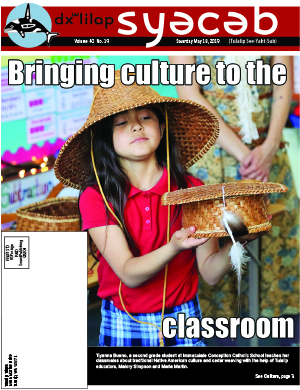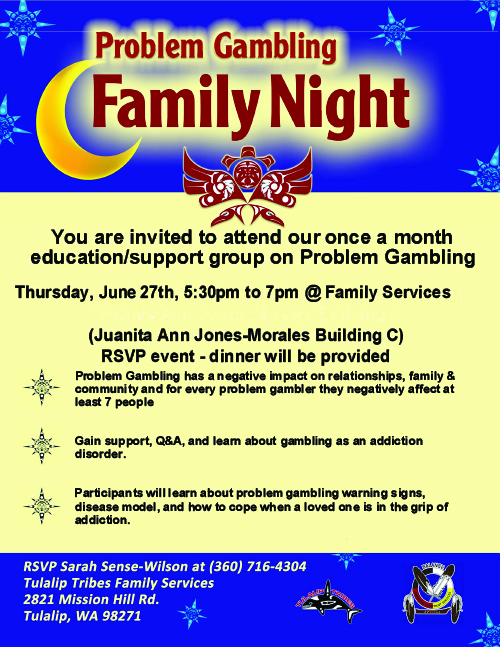
Problem Gambling Family Night, June 27

syəcəb

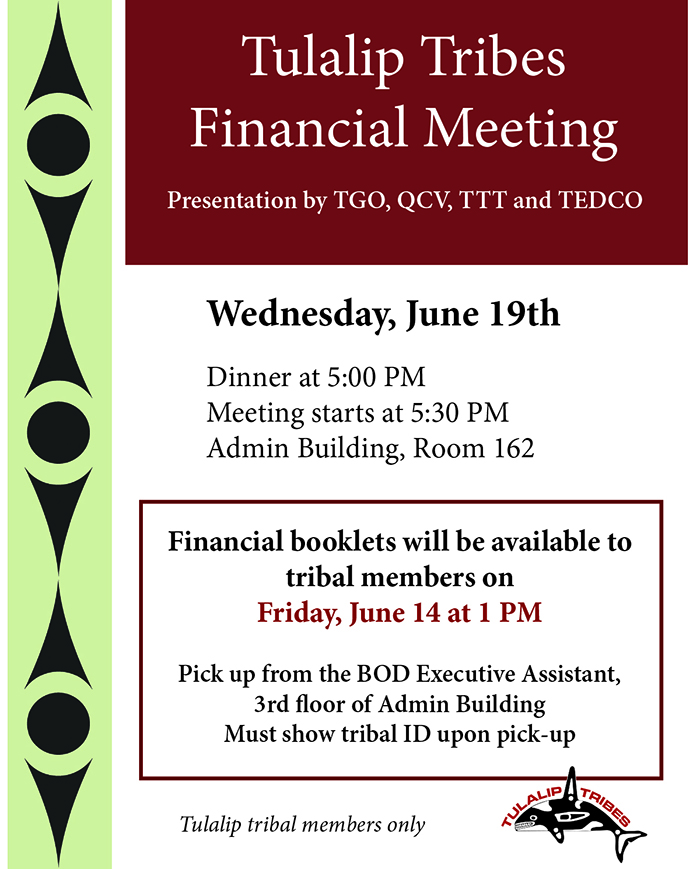

Please use the following link to download the June 8, 2019 issue of the syəcəb:
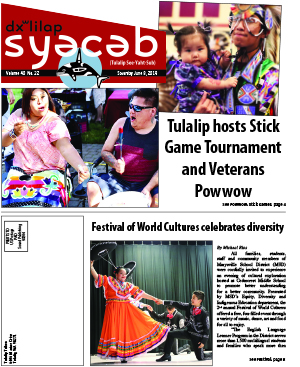
Please use the following link to download the June 1, 2019 issue of the syəcəb:
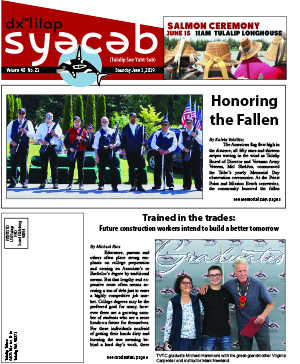
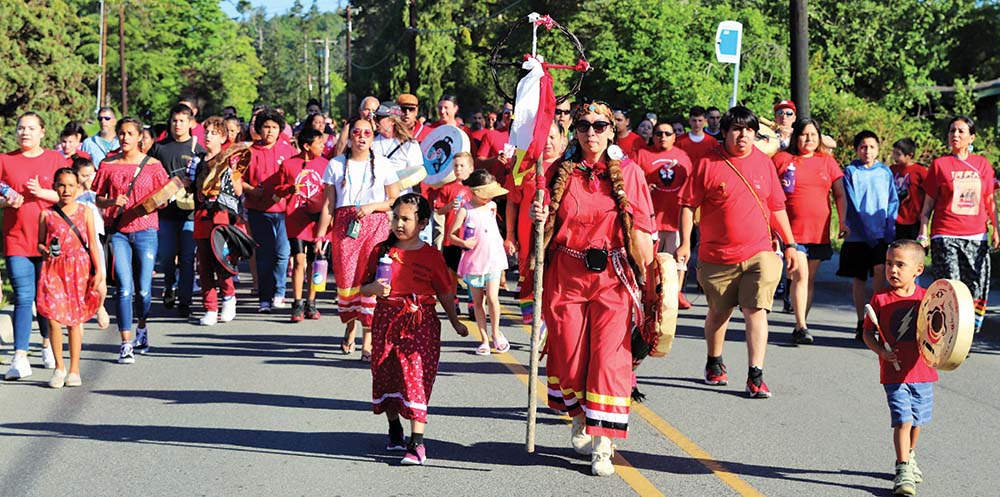
By Micheal Rios, Tulalip News
“It is an honor to be here today. We raise our hands to the Tulalip Nation for welcoming us,” said Earth-Feather Sovereign (Colville Confederated Tribes). “We are here in honor of our missing and murdered Indigenous women and girls, and all missing and murdered people, including two-spirits. We are here to bring community together and to hold a space for healing and awareness.”
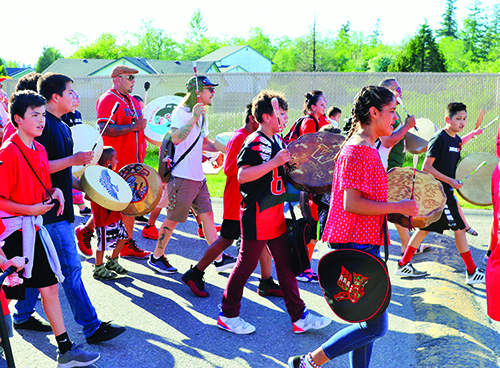
Earth-Feather’s opening remarks struck a chord in every one of the nearly two-hundred Tulalip citizens and community members who gathered at Greg Williams Court on May 10th for an evening of unified support. The vast majority of supporters wore red to symbolize the violent dangers faced by many throughout Indian Country. Numerous reports detail the severity in which Native American women face a disproportionate amount of violence, and the degree to which victims’ cries are silenced, when compared to others in the United States.
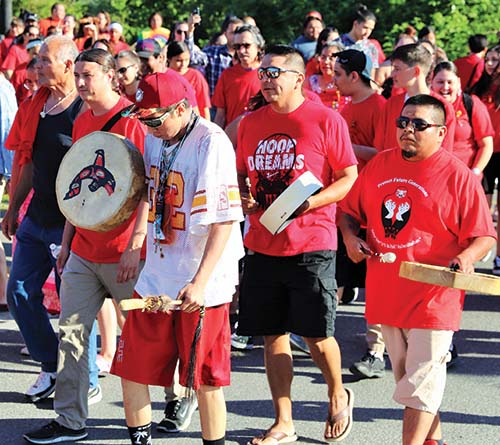
The National Crime Information Center reports that, in 2016, there were 5,712 reports of missing Indigenous women and girls, though the U.S. Department of Justice’s federal missing persons database only logged 116 cases. The Center for Disease Control and Prevention has reported murder is the third-leading cause of death among Native American women between the ages of 10 and 24, and rates of violence on reservations can be up to ten times higher than the national average.
The Tulalip Tribes hosted the sixth stop of an eight city journey from Olympia to Blaine, organized by Earth-Feather and the MMIW Washington group to further awareness for all missing and murdered Indigenous people. Supporters of the cause were greeted at Greg Williams Court and given a red t-shirt that read ‘Prayer Walk 2019’ along with a special cedar rose wrapped in red ribbon to commemorate the occasion.
After a welcoming, prayer, and drum circle set the mood, the large contingent of red-wearing community members began their march through Tulalip. Led by the Sacred Riders, the crowd resembled a sea of red as they walked from Tulalip Bay to the Battle Creek neighborhood.
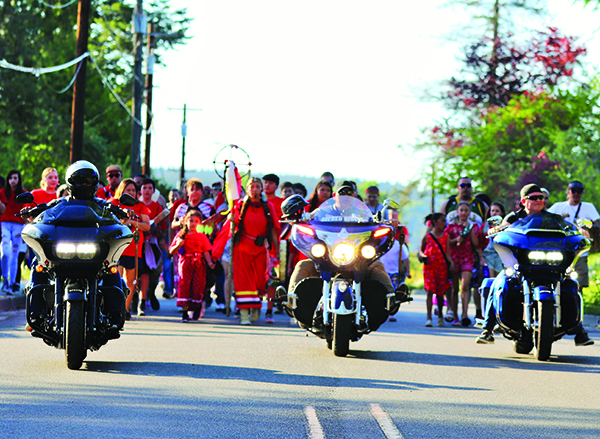
“Our Sacred Riders motorcycle club was honored to be here today and support this important cause,” explained Tony Hatch. “The organizers welcomed us and our motorcycles because it draws more attention to the march itself, and we’re able to lead the way by keeping the road clear for the marchers and their prayers.”
During the march, many prayers were offered for anyone in need, songs were sang to keep spirits uplifted and tobacco was dropped to honor spirit helpers. It was a powerful demonstration made possible only through a strong sense of purpose and shared mission.
“This march means raising awareness for our Native women. The ones who have been murdered or gone missing,” shared Winona Shopbell-Fryberg as she walked alongside her father and daughters. “I was taught how sacred our Native women are, that we are the life givers of our people. When these things happen to our women, along with the domestic violence, it’s very disrupting to our way of life.”
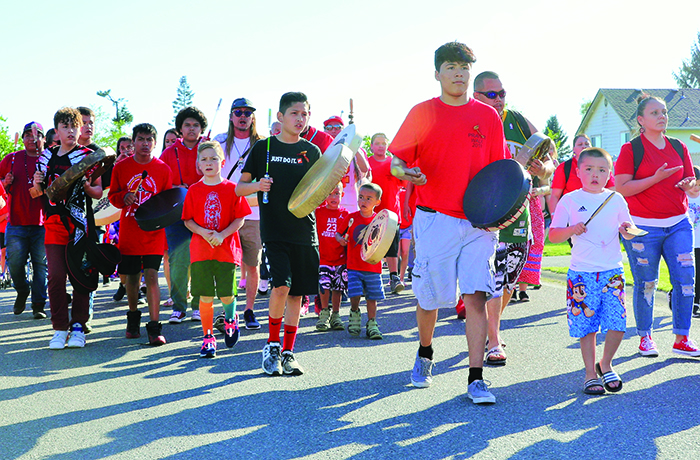
“There’s a lot of us doing our work in our own lives, but we don’t often come together,” added Bibianna Ancheta while taking in the moment. “We’ve been trying and trying to unify our people. This has been a long time coming, a good opportunity for our people to come together.”
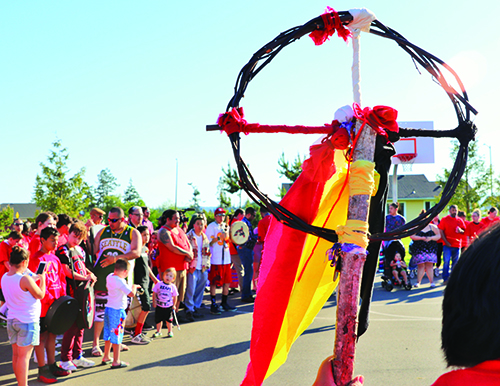
Deep, rhythmic drumbeats from the march could be heard all around the bay. Many people stood outside their houses to take in the scene, while others felt the calling to join in. The distinctive sound acted like a locator beacon for those drawn to the drum, like Monie Ordonia who hopped in her car and followed the sound to the march.
“I was in my bedroom and heard loud drums. I wondered what was going on, so I jumped into my car and drove down Marine until I saw all the red,” she described.
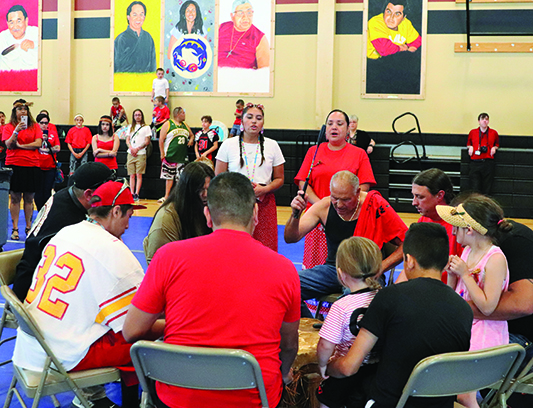
The march continued to the Battle Creek park, where the group formed a large prayer circle and dropped more tobacco, before heading back to Greg Williams Court. Earth-Feather greeted every single participant as they entered the gym with a handshake and thank you.
Back at the gym, a delicious dinner was served followed by a coastal jam.
“It’s amazing that as a community we’re coming together to embrace one another, to support a movement and help bring a spotlight to an issue that for far too long has only received a blind eye,” said Jade Carela, Legacy of Healing Director. Jade and Josh Fryberg, on behalf of the Tribe, presented MMIW Washington with a donation to help further their cause as the group makes their way to the international Peace Arch situated near the Canadian border.
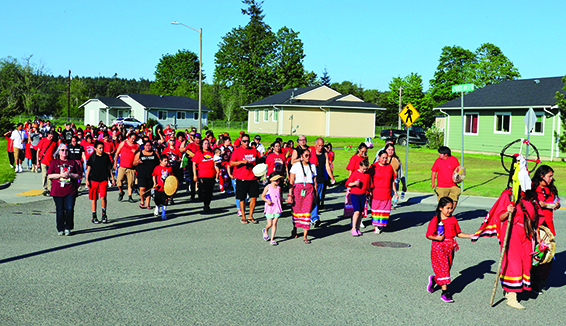
“We’ve really enjoyed the Tulalip hospitality and felt so much love today with our march,” reflected Earth-Feather at the event’s conclusion. “This isn’t something that only happens in the Pacific Northwest, it’s a pandemic happening to all our Indigenous people across Turtle Island. Bringing prayers and resolutions to the issue, while raising continued awareness to missing and murdered Indigenous women, creates protection now and for generations to come.”
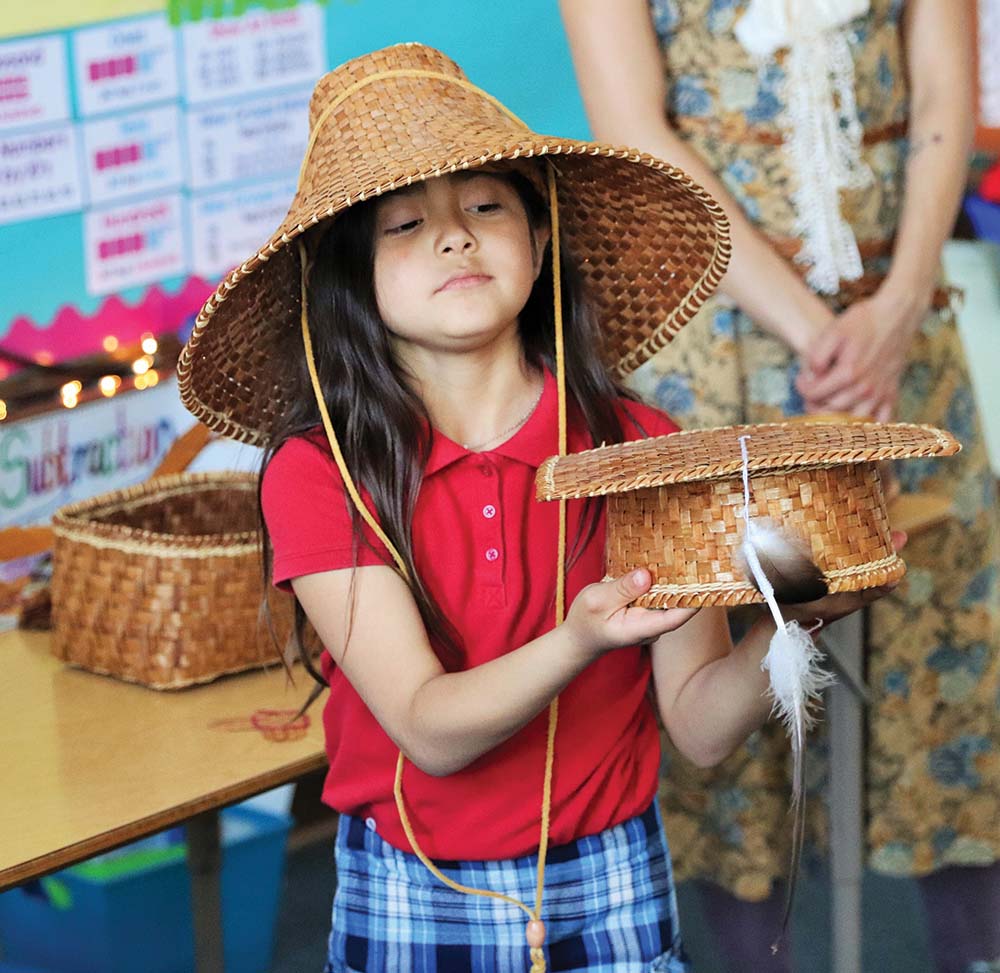
By Micheal Rios, Tulalip News
During a recent in-class lesson, 2nd grader Tiyanna Bueno sat at her desk inside Immaculate Conception Catholic School reading about a Native American rug weaver from New Mexico. Suddenly, inspiration struck the 8-year-old Tulalip tribal member and she yelled out excitedly, “My mom is a weaver! She weaves with cedar.”
A dash of persuading here, some finagling there, and Tiyanna had whipped up an hour-long session for her mother Malory Simpson and Lushootseed language teacher Maria Martin to be guest presenters in her Everett classroom. The idea was to teach the 2nd grade class about local Native American culture while giving a cedar weaving lesson in the process. Fancy that: actual Tulalip culture taught by actual Tulalip educators.
“We want our Native kids from Tulalip to feel like they are represented as an important part of our school,” explained 2nd grade teacher Mrs. Hegg. “Our school’s values are enhanced by promoting the cultures of our students. It’s vibrant, it’s beautiful and goes well with our shared teaching to be good stewards of the Earth.”
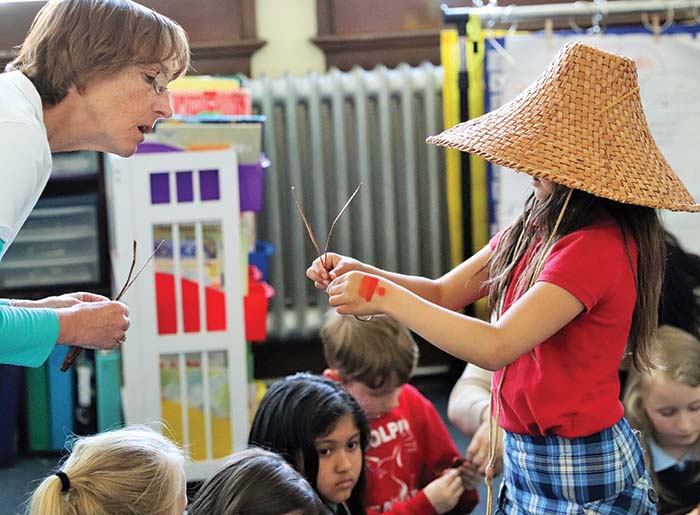
So on a Friday afternoon in early May, Tiyanna, wearing a traditional cedar hat, beamed with pride as she introduced her fellow students to their special guest presenters. Malory and Maria brought in a treasure trove of cedar along with their life-long experiences from being Tulalip citizens.
“We come from the Tulalip Tribes, live on the Tulalip Reservation, and wanted to talk to you all about cedar and what it means to our culture,” said Miss Maria. “I’ll be reading the story Her First Basket. If you listen carefully, you’ll come away with a few lessons that are meaningful to us.”
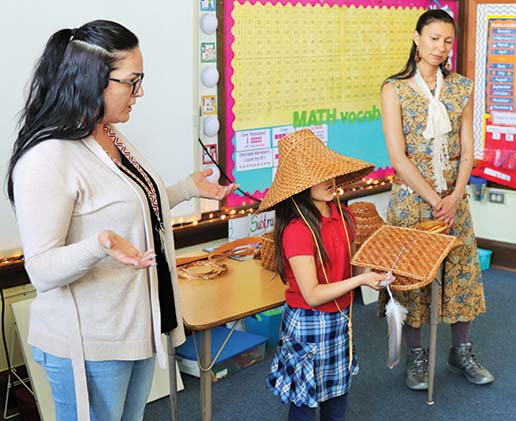
Coast Salish tribes believe the Creator gave their people cedar as a gift. Traditionally, a prayer was offered to honor the spirit of the tree before harvesting its bark, branches and roots. Their ancestors taught them the importance of respecting cedar and understanding how it is to be used, so it will be protected for future generations.
Cedar was the perfect resource, providing tools, clothes, baskets and carvings in addition to having medicinal and spiritual purposes. The highly sought after golden inner bark is separated into strips or shredded for weaving. The processed bark is then used like wool and crafted into clothing, baskets and hats.
Those same traditional teachings are practiced today, along with many others, and passed down to the next generation. While Malory and Maria shared their stories and personal experiences through cedar teachings to the attentive group of youngsters, an ecstatic Tiyanna embodied the spirit of her ancestors by not being afraid to express herself culturally and modelling a variety of cedar creations.
Traditional knowledge was shared and memories made, especially when the trio of Tulalip culture bearers gave a hands-on lesson via cedar rose making. They not only received 100% participation from the students during the activity, but after explaining its tradition to give away your first creation, the 2nd graders quickly got to work making a second and, in some cases, even a third cedar rose.
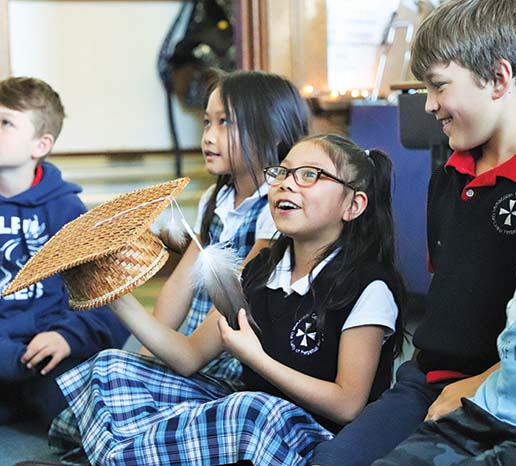
“[Cedar] smells like nature’s perfume,” described one eloquent kiddo. While another quick learner insisted, “Cedar roses are better than real flowers because those die. These ones will live for 1,000 years!”
A definite highlight was when the students asked how to say ‘cedar’ and ‘thank you’ in Lushootseed. After getting the pronunciations down, they were heard using their learned Lushootseed over and over again amongst each other.
“It felt so good to be able to share a piece of our culture,” said Miss Malory, Native Education Advocate. “It makes my heart happy to see the students being so welcoming and eager to learn about another culture. Tiyanna is such a free spirit and takes pride in being open to share about herself, her family and our culture.”
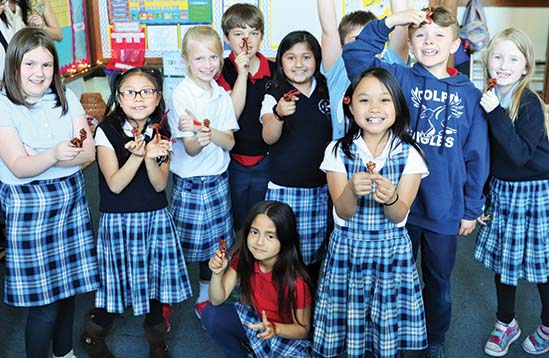
Reflecting on an afternoon she got to bring her Native American lifeway into the classroom, 8-year-old Tiyanna shared, “My favorite part was showing off the cedar hats, cedar headbands, and a cedar heart. I liked showing these things to my class because they remind me of my home in Tulalip.”
Mrs. Hegg’s 2nd grade kids received hands-on teachings with cedar weaving, learned how to say ‘cedar’ and ‘thank you’ in Lushootseed, and, most importantly, learned about a local Native culture not from a textbook, but by living, breathing Tulalip educators.
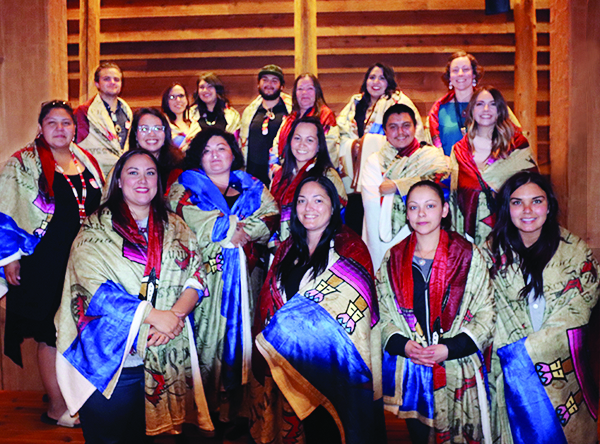
By Micheal Rios, Tulalip News
“Every single time a Native graduates, it’s an opportunity to rewrite history. Because for so long we were shut out of environments where we could tell our own stories,” explained renowned author and keynote speaker Gyasi Ross. “This is a powerful moment. The work you’re doing is recapturing our narrative, its reclaiming our story. You all have counted coup on an educational system that wasn’t created for us. That deserves an amazing amount of acknowledgement and respect.”
Gyasi’s sentiments were well received by the class of 2019 higher education graduates during a special banquet held in their honor on May 20 in the Hibulb longhouse. Surrounded by their supporters in an atmosphere of accomplishment, thirty-five graduates received a heartfelt ovation as they walked proudly to the front when their name was called. Vibrant Native Anthro blankets and silver pendants made by local artist Al Charles were gifted to each honoree to commemorate the occasion.
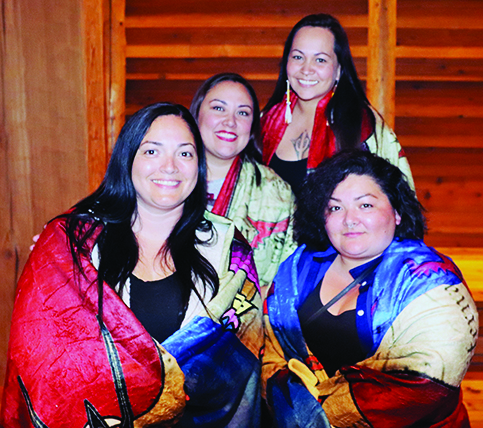
When it comes to being Native American and educated, the common narrative is Natives can’t succeed in a westernized education system. U.S. Census data shows that while more than 60% of high school students go to college, only 17% of Native students are able to continue their education after high school. In a time where education is an important cornerstone for self-sufficiency and quality of life, only 13% of Natives age 25 and older hold a college degree. That narrative is being rewritten by Indigenous scholars who are actively working to decolonize education pathways, not just for themselves but for generations to come.
“My journey started when I had my oldest son, Preston, and I knew that the current education system wasn’t one he should have to go through,” shared Western Governors University graduate Brianne Distefano. “My goal was to create change from within, so I went to work at Quil Ceda Elementary as a para-pro. Now, I’m the Native Liaison. I believe we need as many Native educators as we can get in the school systems because for our kids to be able to dream big, we need to break the mold.”
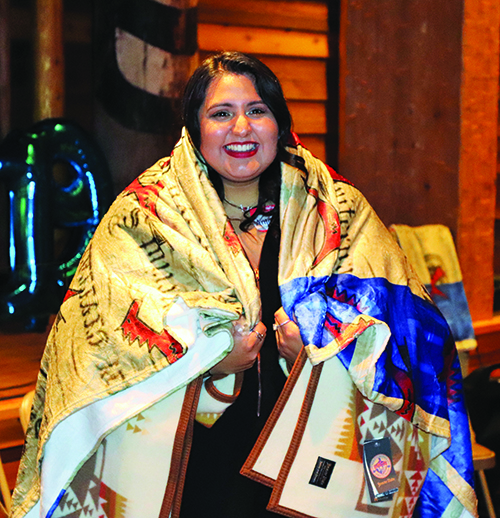
The class of 2019 higher education grads includes 7 Associate’s degrees, 13 Bachelor’s degrees, 2 Master’s degrees, and one of the most coveted achievements in the academic world, a PhD.
“Essentially, I have spent the last 29 years off and on working towards my PhD,” said newly dubbed Dr. Lena Hammons. “Our history gave us some truly amazing tribal leaders, their struggles, survival, and resilience made them strong. Our ancestors’ stories make our people stronger and the more educated we become helps us to fight the political battles we face every day.”
It’s a longer, tougher road for Native adults pursuing their education, which is all the more reason to celebrate their accomplishments. Sometimes there are even more perilous obstacles on the path to success, like battling addiction.
“I was in active addiction while going after my GED,” admitted Everett Community College graduate Aaron Pablo. “Something my journey has proved is it doesn’t require someone being clean and sober to put in the work and get educated. I put in the work, reached my goal, and then put my sights on getting clean. Now, I have 4 months and 25 days clean.”
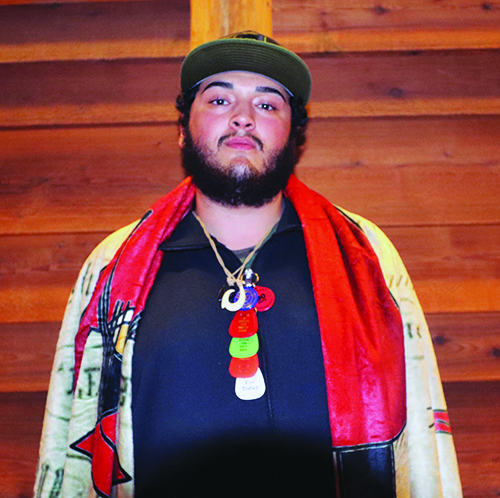
Results of dedication from a lot of long nights and hard work prove what is possible for aspiring Native students everywhere. Fortunately, the Tulalip Tribes offers additional support for prospective and current students via the Higher Education Department and a network of individuals committed to helping. During the evening’s banquet, Valda Gobin, Dawn Simpson, Jeanne Steffener, Norma Comenote, and Margarita Houston received special recognition.
“These ladies were recognized for all of their hard work and care that they put into each student, client, and community member that they serve each day,” said Felicia Stripling, Higher Education Coordinator. “They put their heart and soul into their work and it shows. We wanted to show our appreciation for them and all that they do for our community.”
Tulalip’s Higher Education staff are eager to help new and returning students find their path to success. They can assist with FAFSA and finding scholarship opportunities, while also helping students choose the right school based on personal interests and career desires. For those tribal members who are empowered to continue rewriting the narrative, please contact Higher Education at (360) 716-4888 or email highered@tulaliptribes-nsn.gov
Please use the following link to download the May 25, 2019 issue of the syəcəb:
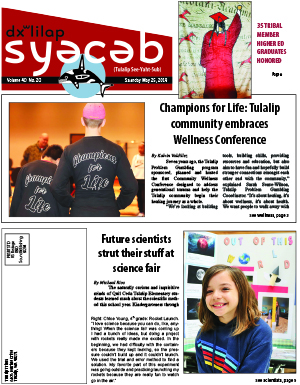
Please use the following link to download the May 18, 2019 issue of the syəcəb:
